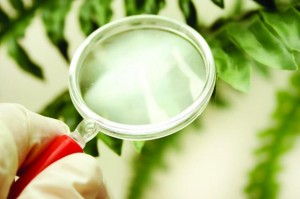
Some classes of phytoconstituents and the tests for their identification are discussed. The identification process is elaborated step by step as below:
Alkaloid
Dissolve the extracts in chloroform
Evaporate the chloroform and acidify the residue
Add few drops of differing reagents to get different coloured precipitates
Mayer’s test
Addition of Mayer’s reagent gives creamy white precipitate
Wagner’s test
Addition of Wagner’s reagent gives orange precipitate.
Dragendroff’s test
Addition of Dragendroff’s reagent gives orange red precipitate.
Hager’s test
Addition of Hager’s reagent gives a yellow crystalline precipitate.
Lactones
Legal’s test
Add mixture of pyridine and sodium nitropruside to the extract.
Treat the above with sodium hydroxide.
Solution turns deep red in colour.
Bal Jets test
Treat the extract with solution of sodium picrate.
The mixture turns yellowish-orange in colour indicating the existence of lactone ring.
Glycosides
Bal Jets test
Same procedure as above.
Keller-Killani test
Add few drops of ferric chloride solution and 1ml of glacial acetic acid to the extracts.
Slowly add concentrated sulphuric acid to the above through the test tube sides.
The appearance of reddish brown ring at the intersection point indicates the presence of glycosides.
Tannins
Ferric Chloride test
Take 2 ml of the extract in a test tube.
Add solution of ferric chloride to above drop by drop.
Blue black precipitate is the residue.
Gelatine test
Take 1% of gelatine solution containing 10% sodium chloride.
Add few drops of above to the extract.
Residue of white precipitate confirms the presence of tannins.
Proteins
Biuret test
The reagent to be used is 40% sodium hydroxide and dilute copper sulphate solution.
Amino acids do not exhibit any colour whereas proteins turn pink, blue or violet in colour.
Ninhydrin test
Amino acids exhibit blue colour under the influence of Ninhydrin.
Proteins normally fail to give positive results.
Flavonoids
Ferric Chloride test Take little quantities of alcoholic solution of extract.
Add some drops of neutral ferric chloride solution.
Resulting colour of the solution should be green.
Shinoda test
Add some pieces of magnesium ribbon to the alcoholic solution of extract.
Add concentrated hydrochloric acid drop by drop.
Resultant colour of solution should be magenta.
Triterpenes
Salkaowski test Add concentrated sulphuric acid in drops to the chloroform solution.
Shake and allow to stand.
Lower layer turns an indicative yellow.
Saponins
Add plenty of water to little quantities of the extract.
Shake thoroughly.
Foam is produced which remains for about ten minutes or so.
Volatile Oils, Fixed oils, Fats
One drop of the solution to be tested should be put on filter paper.
Lack of permanent stain shows the existence of volatile oil.
Use two filter papers and crush the extract between them.
Resulting permanent stain signifies the existence of fixed oils.
Treat the extract to couple of drops of phenolphthalein and 0.5N potassium hydroxide and heat.
Resulting soap formation shows the existence of fats and fixed oil.
At THS Center, we follow elaborate procedures to help identify the phytoconstituents



